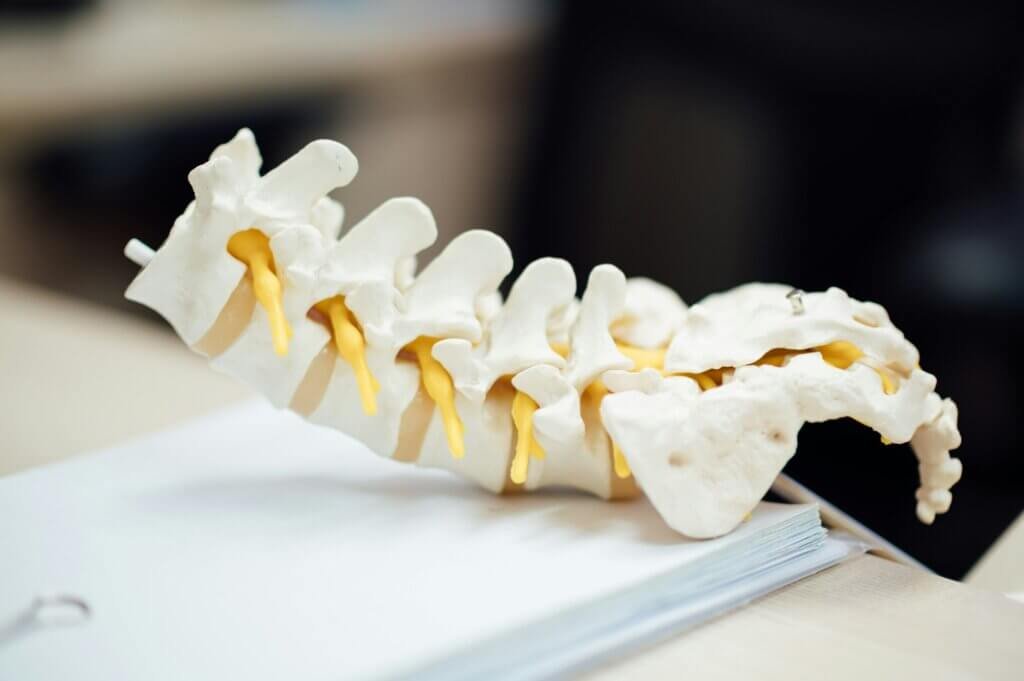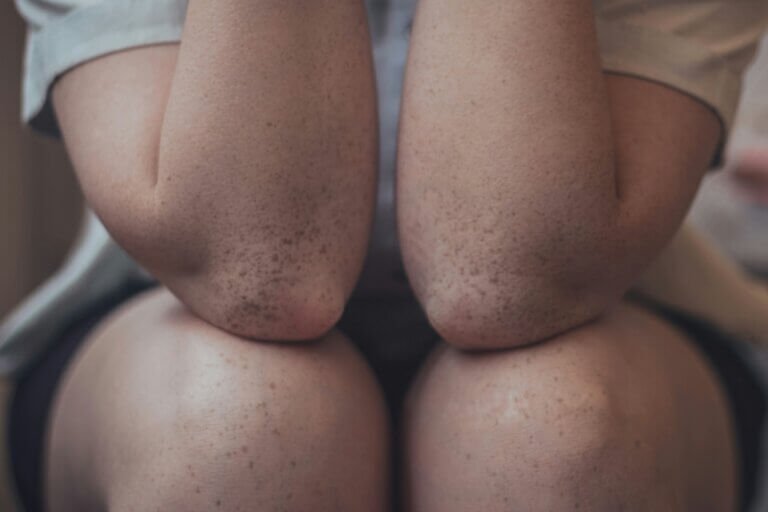
As a fitness enthusiast and personal trainer, I’ve helped countless individuals achieve their fitness goals and maintain a healthy lifestyle. However, one common concern that often arises is the potential for pushups to cause back pain. Many people are hesitant to incorporate this exercise into their routine due to fears of exacerbating existing back issues or developing new ones.
In my experience, pushups can be an incredibly effective and beneficial exercise when performed with proper form and technique. However, it’s crucial to understand the potential risks and take the necessary precautions to avoid back pain. That’s why I’m excited to share my expertise and insights on this topic in this blog post.
Throughout my career, I’ve worked with clients of all ages and fitness levels, and I’ve seen firsthand how pushups can transform both physical and mental well-being. From improved upper body strength and endurance to enhanced core stability and posture, the benefits of pushups are numerous and far-reaching.
But what about the potential for back pain? In this blog post, I’ll delve into the science behind pushups and back pain, exploring the common causes and providing practical tips for preventing and managing discomfort. I’ll also share real-life success stories of clients who have overcome back pain through proper pushup technique and a comprehensive approach to fitness.
Whether you’re a seasoned athlete looking to optimize your performance or someone just starting your fitness journey, this blog post will equip you with the knowledge and tools you need to safely and effectively incorporate pushups into your routine. By the end, you’ll have a better understanding of the relationship between pushups and back pain, and you’ll be empowered to take control of your health and fitness.
So, let’s dive in and explore the truth about pushups and back pain. Together, we’ll uncover the secrets to performing this exercise safely and effectively, and unlock the incredible benefits it has to offer for your overall well-being.
Debunking the Myth: Can Pushups Really Cause Back Pain?
It’s a common misconception that pushups can cause back pain. However, the truth is that pushups are an excellent exercise for building overall body strength, including the back muscles. The key is to perform them with proper form and technique. When done correctly, pushups actually help strengthen the core and back, reducing the risk of injury and pain. The myth that pushups cause back pain often stems from people performing the exercise incorrectly, leading to strain on the lower back. By understanding the proper mechanics and avoiding common mistakes, you can safely incorporate pushups into your workout routine without worrying about back pain.
How can I prevent back pain while doing pushups?
Preventing back pain while doing pushups is all about maintaining proper form and technique. Here are some tips below:
- Keep your abdomen muscles tight while you move.
- Maintain a straight line from your head to your heels.
- Avoid letting your hips sag or arching your lower back.
- Keep your elbows at a 45-degree angle to your body.
- Breathe naturally, exhaling on the way up and inhaling on the way down.
If you find that pushups are causing discomfort or pain in your back, try modifying the exercise by doing them on an incline or from your knees. This will reduce the amount of body weight you’re pushing and take some of the pressure off your back. Remember to listen to your body and stop if you feel any sharp or persistent pain.
Understanding the Mechanics: How Pushups Impact the Back
Pushups are primarily an upper body exercise, targeting the chest, shoulders, and triceps. However, they also engage the core and back muscles to stabilize the spine and maintain proper form. When performed correctly, pushups can actually help strengthen the back and improve posture.
The key to understanding how pushups impact the back is to focus on the core. By keeping your abs engaged throughout the movement, you create a stable foundation for your spine. This helps prevent excessive arching or sagging of the lower back, which can lead to pain and strain.
It’s also important to note that pushups are a closed-chain exercise, meaning your hands are fixed on the ground while your body moves. This helps strengthen the muscles that support the spine and improve overall back health.
Key Factors in Preventing Back Pain During Pushups
Proper form and technique are essential for preventing back pain during pushups. Here’s a step-by-step guide to performing the exercise correctly:
- Begin in a raised plank stance, with your hands directly beneath your shoulders and your body aligned in a straight line from head to heels.
- Engage your core and glutes to maintain a neutral spine.
- Bend your elbows at a 45-degree angle to your body and lower your chest towards the ground.
- Keep your elbows near your body and your shoulders pulled back.
- Press back up to the starting position, keeping your body in a straight line.
- Remember to breathe naturally throughout the movement, exhaling on the way up and inhaling on the way down. If you find that you’re struggling to maintain proper form, try modifying the exercise by doing pushups on an incline or from your knees.
Scrollable
Common Mistakes to Avoid: Tips for Safely Performing Pushups
While pushups are generally a safe exercise, there are a few common mistakes that can lead to back pain:
- Letting your hips sag or arching your lower back.
- Not engaging your core throughout the movement.
- Flaring your elbows out to the sides.
- Holding your breath or straining your neck.
- Performing too many reps or sets without proper rest and recovery.
- To avoid these mistakes, focus on maintaining proper form and technique, and listen to your body. If you feel any discomfort or pain in your back, stop the exercise immediately and consult with a healthcare professional or certified personal trainer.
Strengthening the Core: How Core Stability Affects Back Health During Pushups
One of the keys to preventing back pain during pushups is having a strong, stable core. The core muscles, including the abs and lower back, act as a natural corset to support the spine and maintain proper posture.
When you perform pushups with a weak core, it becomes more difficult to maintain a neutral spine and prevent excessive arching or sagging of the lower back. This can lead to strain and pain in the back muscles.
By strengthening your core through exercises like planks, crunches, and other ab-focused movements, you’ll be better equipped to maintain proper form during pushups and reduce the risk of back pain. Aim to incorporate core-strengthening exercises into your routine at least 2-3 times per week, and focus on engaging your abs throughout your pushup sets.
Modifications and Alternatives: Adjusting Pushup Variations to Protect the Back
If you’re experiencing back pain during pushups, there are several modifications and alternatives you can try to reduce the strain on your back:
- Incline pushups: Perform pushups with your hands on a raised surface like a bench or table. This reduces the amount of body weight you’re pushing and takes some of the pressure off your back.
- Knee pushups: Do pushups with your knees on the ground instead of your toes. This makes the exercise easier and reduces the load on your back.
- Wall pushups: Stand facing a wall and push yourself away from it. This is the easiest variation and can be a good starting point for beginners or those recovering from back pain.
- If you’re still experiencing discomfort or pain with these modifications, consider trying alternative exercises that target the upper body without putting as much stress on the back, such as dumbbell rows or lat pulldowns.
Listen to Your Body: Signs and Signals of Potential Back Strain During Pushups
When it comes to preventing back pain during pushups, it’s essential to listen to your body and pay attention to any signs or signals of potential strain or discomfort. Some common indicators that you may be putting too much stress on your back include:
- Sharp or persistent pain in the lower back.
- Difficulty maintaining proper form and technique.
- Feeling like you’re arching your back too much or letting your hips sag.
- Experiencing pain or discomfort during or after your workout.
If you notice any of these signs, stop the exercise immediately and assess your form. If the pain persists or worsens, consult with a healthcare professional or certified personal trainer to determine the cause and develop a plan for addressing it.
Remember, it’s always better to err on the side of caution when it comes to your back health. If you’re unsure about whether pushups are right for you, it’s best to consult with a professional before incorporating them into your routine.
Prehabilitation Strategies: Exercises to Strengthen the Back and Prevent Pain
One of the best ways to prevent back pain during pushups is to incorporate prehabilitation exercises into your routine. Prehab exercises are designed to strengthen the muscles and joints that support the back, reducing the risk of injury and pain.
Some effective prehab exercises for the back include:
- Superman: Lie face down on the ground and simultaneously lift your arms, chest, and legs off the floor, squeezing your back muscles at the top of the movement.
- Bird dog: Start on your hands and knees, then extend your opposite arm and leg, keeping your core engaged.
- Bridges: Lie on your back with your knees bent and feet flat on the floor. Elevate your hips from the floor, contracting your buttocks at the peak of the motion.
Aim to incorporate these exercises into your routine 2-3 times per week, focusing on proper form and technique. Remember to start with a manageable number of reps and sets, and gradually increase the difficulty over time.
Seeking Professional Guidance: When to Consult a Trainer or Physical Therapist
While pushups are generally a safe and effective exercise, there may be times when it’s best to consult with a professional before incorporating them into your routine. Some situations where seeking guidance may be beneficial include:
- If you have a history of back pain or injury.
- If you’re unsure about your form or technique.
- If you’re experiencing persistent or worsening back pain during or after your workouts.
- If you’re new to exercise or have any underlying health conditions that may affect your ability to perform pushups safely.
A certified personal trainer or physical therapist can assess your individual needs and goals, and help you develop a safe and effective plan for incorporating pushups into your routine. They can also provide guidance on proper form, offer modifications and alternatives based on your abilities and limitations, and help you monitor your progress and adjust your program as needed.
Always prioritize your well-being and safety above all else. If you have any concerns about your ability to perform pushups safely, don’t hesitate to seek professional guidance.
Success Stories: Overcoming Back Pain Challenges and Mastering Pushups
One of the most inspiring aspects of the fitness journey is witnessing individuals overcome challenges and achieve their goals. When it comes to pushups and back pain, there are countless success stories of people who have persevered through discomfort and mastered this exercise.
Take Sarah, for example. She had struggled with chronic back pain for years and was hesitant to incorporate pushups into her routine. However, with the guidance of a certified personal trainer and a commitment to proper form and technique, Sarah was able to gradually work her way up to performing perfect pushups without any discomfort.
Another inspiring story is that of Michael, who had been avoiding pushups altogether due to a fear of exacerbating his back pain. With the help of a physical therapist and a series of prehab exercises, Michael was able to strengthen his core and back muscles, allowing him to safely incorporate pushups into his routine.
These stories serve as a reminder that with dedication, patience, and the right guidance, it’s possible to overcome back pain challenges and reap the benefits of pushups. By focusing on proper form, gradually progressing, and listening to your body, you too can join the ranks of those who have mastered this exercise and experienced the incredible physical and mental benefits it has to offer.





